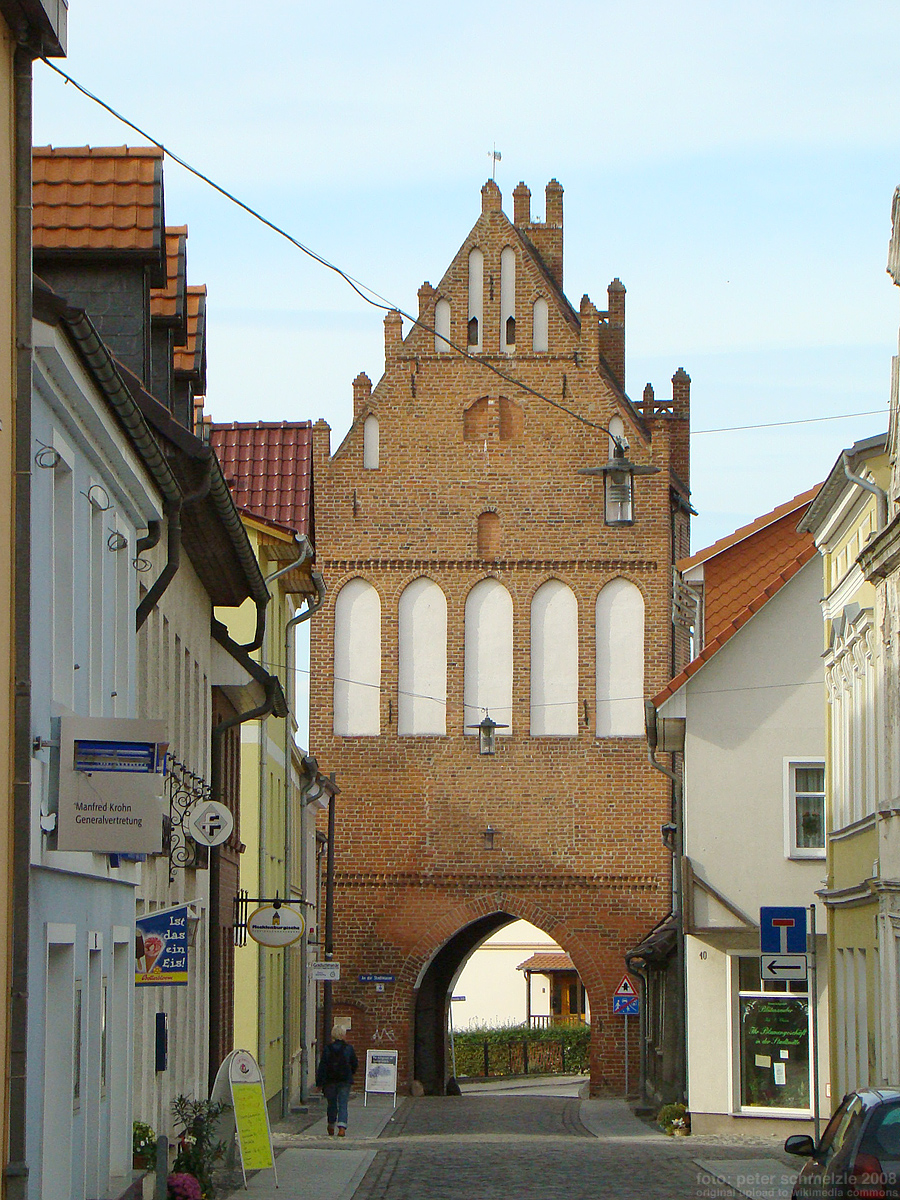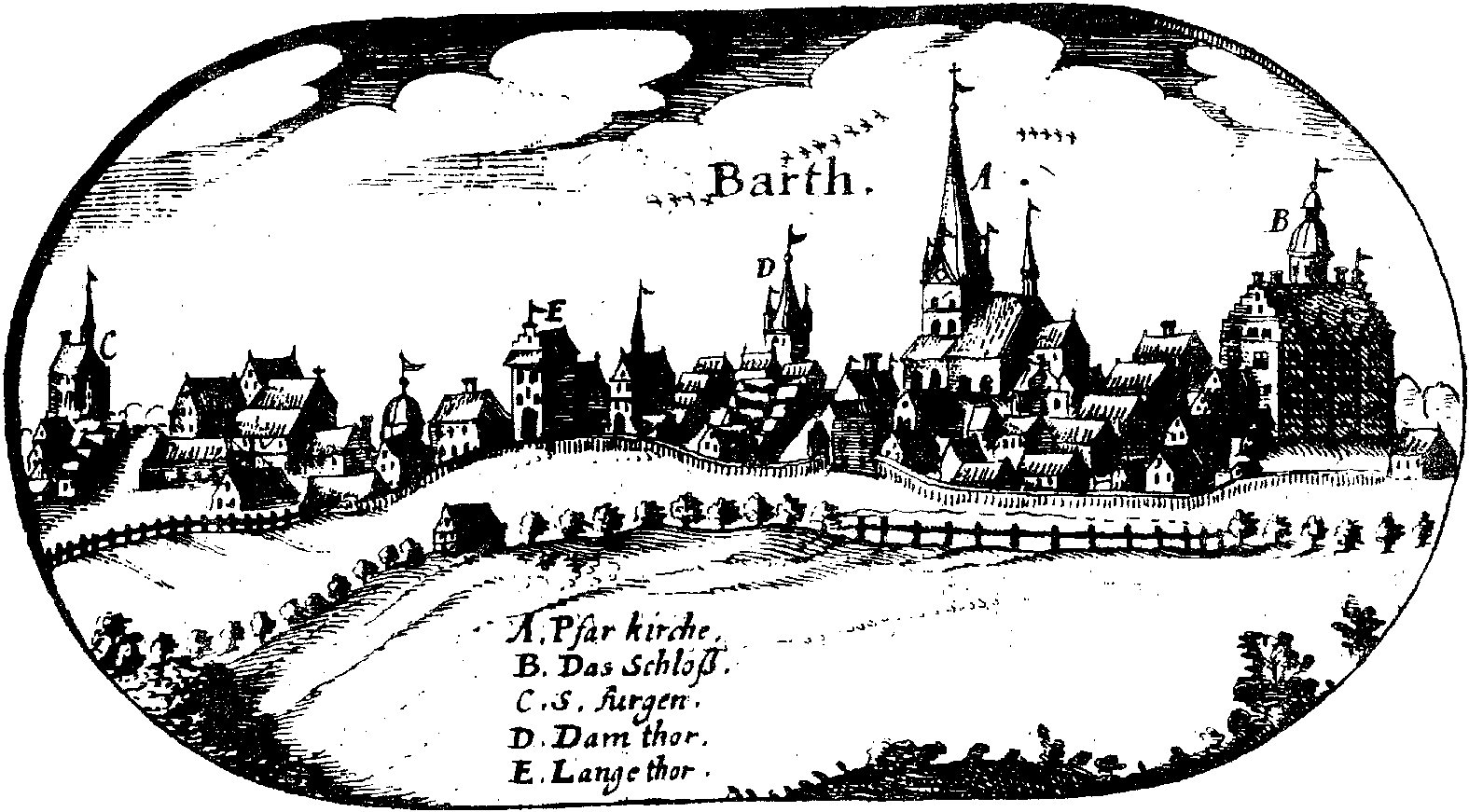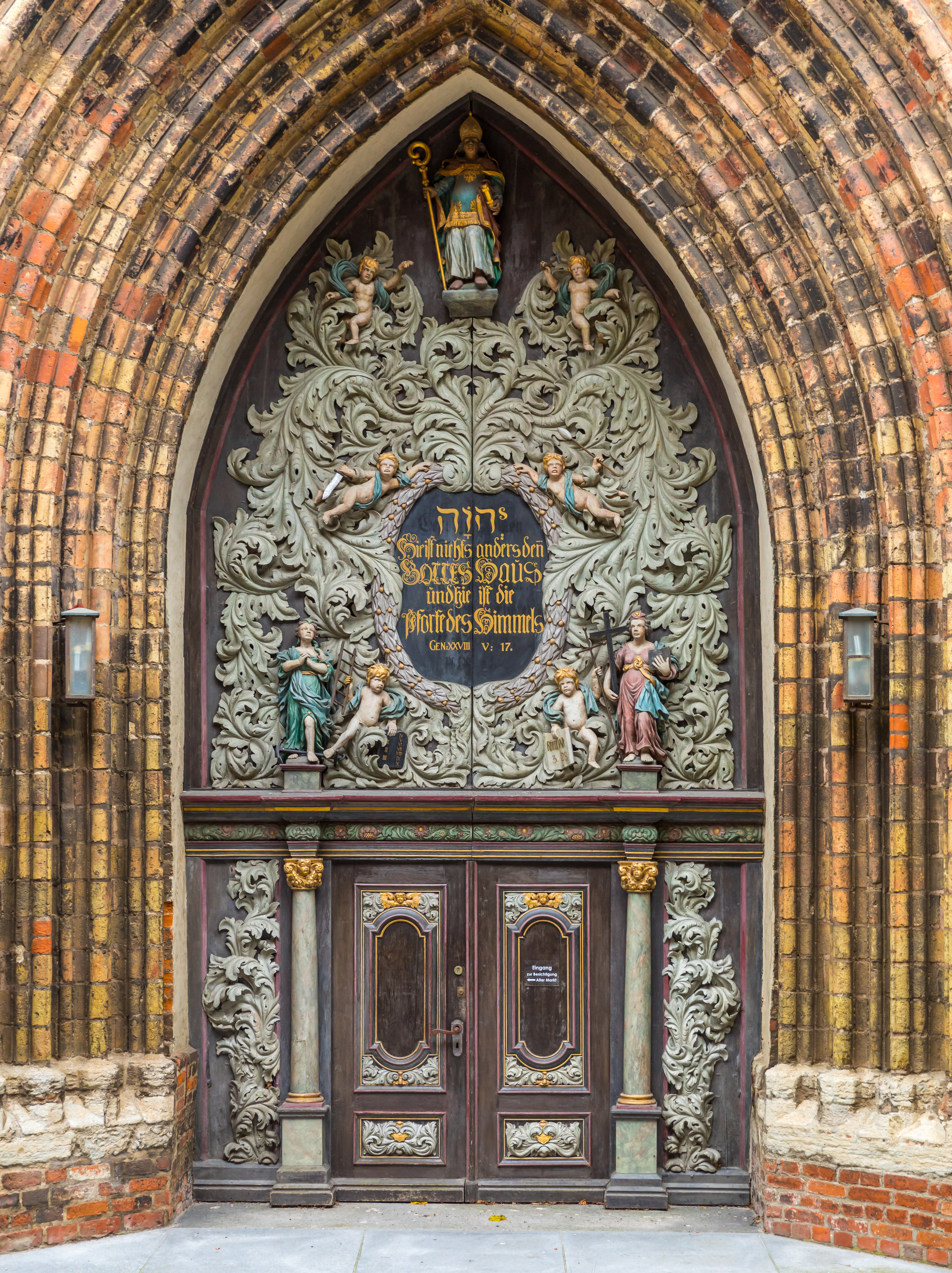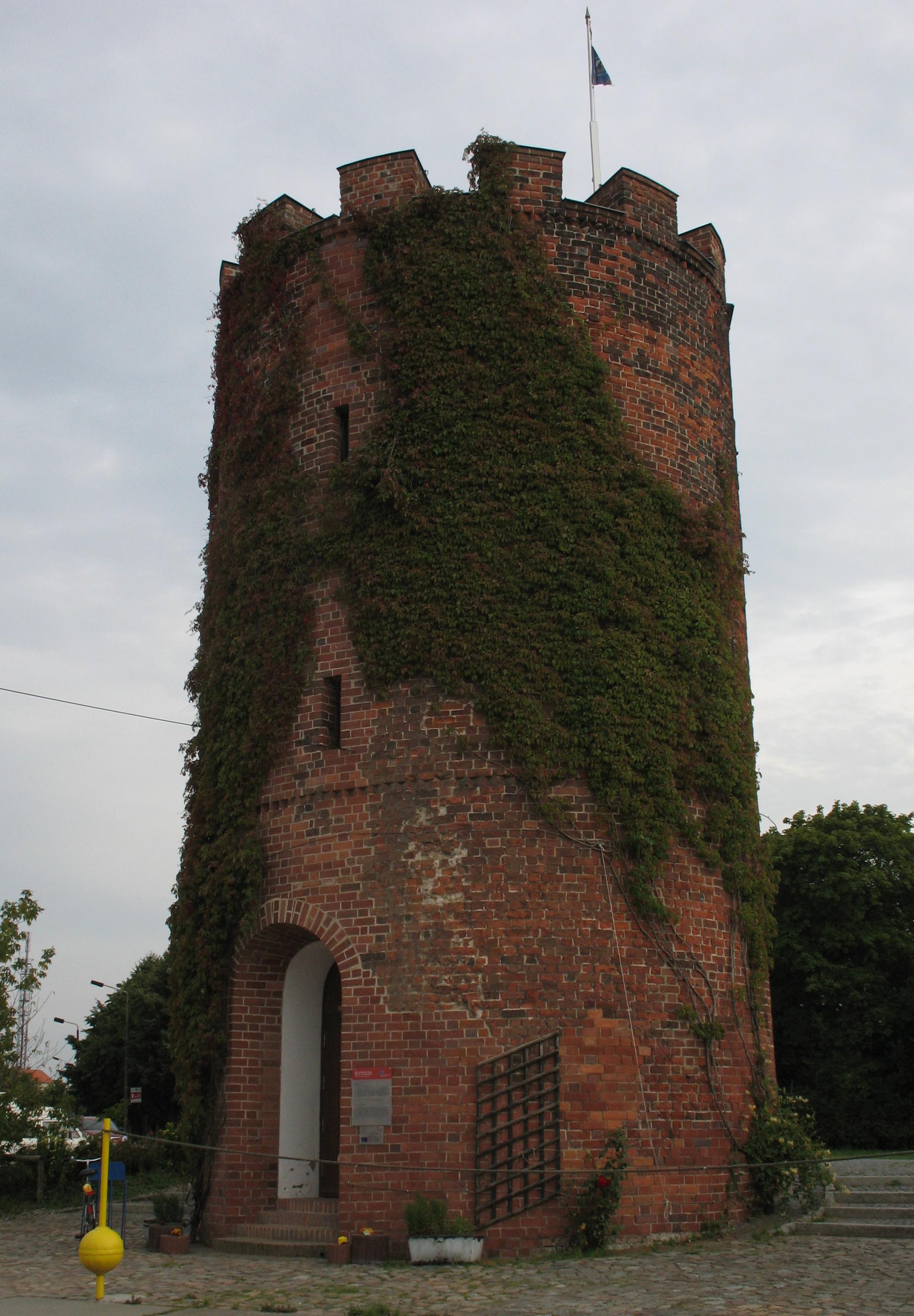|
Eric II, Duke Of Pomerania
Eric II or Erich II (between 1418 and 1425 – 5 July 1474) was a member of the House of Pomerania (also known as the Griffins) and was the ruling Duke of Pomerania-Wolgast from 1457 to 1474. He was the son of Wartislaw IX of Pomerania-Wolgast and Sophia, daughter of Eric IV of Saxe-Lauenburg. Life In 1451, Wartislaw IX arranged his son's marriage to Sophia, daughter of Bogislaw IX of Pomerania-Stolp and heiress of Eric I of Pomerania-Stolp, who had also been king of the Kalmar Union. The marriage of these distant relatives granted Eric II access to Eric I's lands in Farther Pomerania. Also, Eric I arranged the Lauenburg-Bütow Land at the Pomerelian border to be granted by the Polish king to Eric II on 3 January 1455 as a reward for aiding Poland in her struggles with the Teutonic Knights. In 1456, Eric took over Maszewo Land in Farther Pomerania, despite Wassow being not included in his share of Pomerania. This led to conflicts with Otto III, Duke of Pomerania-Ste ... [...More Info...] [...Related Items...] OR: [Wikipedia] [Google] [Baidu] |
House Of Griffin
The House of Griffin or Griffin dynasty, (; , ; Latin: ''Gryphes''), or House of Pomerania (see ), was a dynasty ruling the Duchy of Pomerania from the 12th century until 1637. The name "Griffins" was used by the dynasty after the 15th century and had been taken from the ducal coat of arms. Duke Wartislaw I, Duke of Pomerania, Wartislaw I (died 1135) was the first historical ruler of the Duchy of Pomerania and the founder of the Griffin dynasty. The most prominent Griffin was Eric of Pomerania, who became king of the Kalmar Union in 1397, thus ruling Denmark, Sweden, Finland and Norway. The last Griffin duke of Pomerania was Bogislaw XIV, Duke of Pomerania, Bogislaw XIV, who died during the Thirty Years' War, which led to the division of Pomerania between Brandenburg-Prussia, Swedish Empire, Sweden and Crown of the Kingdom of Poland, Poland. Duchess Anna of Pomerania, Anna von Croy, daughter of Duke Bogislaw XIII, Duke of Pomerania, Bogislaw XIII and the last member of the House ... [...More Info...] [...Related Items...] OR: [Wikipedia] [Google] [Baidu] |
Maszewo Land
Maszewo () is a town in Goleniów County, West Pomeranian Voivodeship, in north-western Poland Poland, officially the Republic of Poland, is a country in Central Europe. It extends from the Baltic Sea in the north to the Sudetes and Carpathian Mountains in the south, bordered by Lithuania and Russia to the northeast, Belarus and Ukrai .... Demographics References External links Official town webpage Cities and towns in West Pomeranian Voivodeship Goleniów County {{Goleniów-geo-stub ... [...More Info...] [...Related Items...] OR: [Wikipedia] [Google] [Baidu] |
Grimmen
Grimmen (; ) is a town in Vorpommern-Rügen, a district in the States of Germany, Bundesland Mecklenburg-Vorpommern, Germany. Prior to 2011, when district reforms were made in Mecklenburg-Vorpommern, it was the capital of the now bygone Nordvorpommern district, which was abolished and merged to create the district of Vorpommern-Rügen. Geography Grimmen is located in southeastern Nordvorpommern on the banks of the river Trebel, about 30 km south of Stralsund and 30 km west of Greifswald. The town is connected to the Stralsund- Neustrelitz-Berlin railways, and to Autobahn A 20 motorway (Germany), A 20. Adjacent to the city limits are Amt (country subdivision), Amt Franzburg-Richtenberg in the West, Amt Miltzow in the North, and the Süderholz Municipalities of Germany, municipality in the Southeast. Villages within Grimmen's city limits In addition to the town of Grimmen, the following villages are also within Grimmen's city limits: * Appelshof * Gerlachsruh * Gre ... [...More Info...] [...Related Items...] OR: [Wikipedia] [Google] [Baidu] |
Tribsees
Tribsees () is a municipality in the Vorpommern-Rügen district, in Mecklenburg-Vorpommern, in north-eastern Germany. It is situated southwest of Stralsund, and east of Rostock. Etymology The name may come from the Slavic word "treb" or "trebez" (Polish: "trzebiez") in the meaning of clearing. According to another version, the name came from a Slavic tribe (''Tribeden'') that inhabited the area in the early Middle Ages. History The ''Tribeden'' are mentioned for the first time in 955. The ''Tribusses'' territory was mentioned in 1136, and the castle was incorporated by Pope Innocent II into the newly formed Bishopric of Wolin in 1140. It formed part of the Duchy of Pomerania, and around 1184 it passed to the Slavic Principality of Rügen, a vassal of Denmark. The town is mentioned in a document in Lübeck in 1241. In 1245 it is noted that the Neuenkamp monastery () had the right of patronage over the church in Tribsees. An agreement between the city council of Stralsund and ... [...More Info...] [...Related Items...] OR: [Wikipedia] [Google] [Baidu] |
Barth, Germany
Barth () is a town in Mecklenburg-Vorpommern in north-eastern Germany. It is situated at a lagoon ( Bodden) of the Baltic Sea facing the Fischland-Darss-Zingst peninsula. Barth belongs to the district of Vorpommern-Rügen. It is close to the Western Pomerania Lagoon Area National Park. In 2011, it held a population of 8,706. History Middle Ages Barth dates back to the medieval German Ostsiedlung, before which the area was settled by Wends of the Liuticians or Rani tribe. Jaromar II, Danish prince of Rügen, granted the town Lübeck law in 1255. In the same document, he agreed to remove his burgh, ''Borgwall'' or ''Neue Burg'', then on the northwestern edge of the town's projected limits. Another Wendish burgh, ''Alte Burg'' near today's train station, was not used anymore. The German town was set up on empty space between the burghs. Not a member of the Hanseatic League, the town never grew to the importance and size of neighboring Hanseatic towns like Stralsund. The la ... [...More Info...] [...Related Items...] OR: [Wikipedia] [Google] [Baidu] |
Rügen
Rügen (; Rani: ''Rȯjana'', ''Rāna''; , ) is Germany's largest island. It is located off the Pomeranian coast in the Baltic Sea and belongs to the state of Mecklenburg-Western Pomerania. The "gateway" to Rügen island is the Hanseatic city of Stralsund, where it is linked to the mainland by road and railway via the Rügen Bridge and Causeway, two routes crossing the two-kilometre-wide Strelasund, a sound of the Baltic Sea. Rügen has a maximum length of (from north to south), a maximum width of in the south and an area of . The coast is characterised by numerous sandy beaches, lagoons () and open bays (), as well as peninsulas and headlands. In June 2011, UNESCO awarded the status of a World Heritage Site to the Jasmund National Park, characterised by vast stands of beeches and chalk cliffs like King's Chair, the main landmark of Rügen island. The island of Rügen is part of the district of Vorpommern-Rügen, with its county seat in Stralsund. The towns on Rüg ... [...More Info...] [...Related Items...] OR: [Wikipedia] [Google] [Baidu] |
Wartislaw X, Duke Of Pomerania
Duke Wartislaw X of Pomerania (1435 – 17 December 1478) was the second son of Duke Wartislaw IX of Pomerania and his wife, Sophia of Saxe-Lauenburg. Wartislaw married twice. On 5 March 1454, he married Elizabeth of Brandenburg, the widow of the Duke Joachim II "the Younger" of Pomerania-Stettin and daughter of Margrave John of the Neumark. She died in early 1465. They had two sons: Swantibor V and Ertmar, both died of the plague in 1464 at an early age. Wartislaw's second wife was Magdalena of Mecklenburg, the daughter of Henry, Duke of Mecklenburg-Stargard. This marriage was childless. After Wartislaw's death, Magdalena married Count Burkhard of Barby-Mühlingen. In 1458, Wartislaw's father died and he and his older brother, Eric II began jointly ruling Pomerania. They quickly got into a dispute over the inheritance and succession of Pomerania-Stolp and Pomerania-Rügenwalde. Eric had married princess Sophia, the daughter of Duke Bogislaw IX and after the ... [...More Info...] [...Related Items...] OR: [Wikipedia] [Google] [Baidu] |
Stralsund
Stralsund (; Swedish language, Swedish: ''Strålsund''), officially the Hanseatic League, Hanseatic City of Stralsund (German language, German: ''Hansestadt Stralsund''), is the fifth-largest city in the northeastern German federal state of Mecklenburg-Western Pomerania after Rostock, Schwerin, Neubrandenburg and Greifswald, and the second-largest city in the Pomeranian part of the state. It is located on the southern coast of the Strelasund, a Sound (geography), sound of the Baltic Sea separating the island of Rügen from the Pomeranian mainland.''Britannica Online Encyclopedia'', "Stralsund" (city), 2007, webpageEB-Stralsund The Strelasund Crossing with its two bridges and several ferry services connects Stralsund with Rügen, the largest island of Germany and Pomerania. The Western Pomeranian city is the seat of the Vorpommern-Rügen district and, together with Greifswald, Stralsund forms one of four high-level List of cities in Mecklenburg-Vorpommern, urban centres of the region ... [...More Info...] [...Related Items...] OR: [Wikipedia] [Google] [Baidu] |
Burgess (title)
A burgess was the holder of a certain status in an English, Irish or Scottish borough in the Middle Ages and the early modern period, designating someone of the burgher class. It originally meant a freeman of a borough or burgh, but later came to be used mostly for office-holders in a town or one of its representatives in the House of Commons of England. Etymology The word was derived in Middle English and Middle Scots from the Old French word ''burgeis'', simply meaning "an inhabitant of a town" (cf. ''burgeis'' or ''burges'' respectively). The Old French word ''burgeis'' is derived from ''bourg'', meaning a market town or medieval village, itself derived from Late Latin ''burgus'', meaning "fortress" or "wall". In effect, the reference was to the north-west European medieval and renaissance merchant class which tended to set up their storefronts along the outside of the city wall, where traffic through the gates was an advantage and safety in event of an attack was easily a ... [...More Info...] [...Related Items...] OR: [Wikipedia] [Google] [Baidu] |
Heinrich Rubenow
Heinrich may refer to: People * Heinrich (given name), a given name (including a list of people with the name) * Heinrich (surname), a surname (including a list of people with the name) *Hetty (given name), a given name (including a list of people with the name) Places * Heinrich (crater), a lunar crater * Heinrich-Hertz-Turm, a telecommunication tower and landmark of Hamburg, Germany Other uses * Heinrich event, a climatic event during the last ice age * Heinrich (card game), a north German card game * Heinrich (farmer), participant in the German TV show a ''Farmer Wants a Wife'' * Heinrich Greif Prize, an award of the former East German government * Heinrich Heine Prize, the name of two different awards * Heinrich Mann Prize, a literary award given by the Berlin Academy of Art * Heinrich Tessenow Medal, an architecture prize established in 1963 * Heinrich Wieland Prize, an annual award in the fields of chemistry, biochemistry and physiology * Heinrich, known as Haida in Ja ... [...More Info...] [...Related Items...] OR: [Wikipedia] [Google] [Baidu] |
Greifswald
Greifswald (), officially the University and Hanseatic City of Greifswald (, Low German: ''Griepswoold'') is the fourth-largest city in the German state of Mecklenburg-Western Pomerania after Rostock, Schwerin and Neubrandenburg. In 2021 it surpassed Stralsund for the first time, and became the largest city in the Pomeranian part of the state. It sits on the River Ryck, at its mouth into the Danish Wiek, a sub-bay of the Bay of Greifswald, which is itself a sub-bay of the Bay of Pomerania of the Baltic Sea. It is the seat of the district of Vorpommern-Greifswald, Western Pomerania-Greifswald, and is located roughly in the middle between the two largest Pomeranian islands of Rügen and Usedom. The closest larger cities are Stralsund, Rostock, Szczecin and Schwerin. It lies west of the River Zarow, the historical cultural and linguistic boundary between West (west of the river) and Central Pomerania (east of the river). The city derives its name from the dukes of Pomerania, the Hous ... [...More Info...] [...Related Items...] OR: [Wikipedia] [Google] [Baidu] |
Hanseatic League
The Hanseatic League was a Middle Ages, medieval commercial and defensive network of merchant guilds and market towns in Central Europe, Central and Northern Europe, Northern Europe. Growing from a few Northern Germany, North German towns in the late 12th century, the League expanded between the 13th and 15th centuries and ultimately encompassed nearly 200 settlements across eight modern-day countries, ranging from Tallinn in Estonia in the east, Bergen (Bjørgvin) in Norway to the North to the Netherlands in the west, and extended inland as far as Cologne, Prussia (region), the Prussian regions and Kraków, Poland. The League began as a collection of loosely associated groups of German traders and towns aiming to expand their commercial interests, including protection against robbery. Over time, these arrangements evolved into the League, offering traders toll privileges and protection on affiliated territory and trade routes. Economic interdependence and familial connections am ... [...More Info...] [...Related Items...] OR: [Wikipedia] [Google] [Baidu] |





